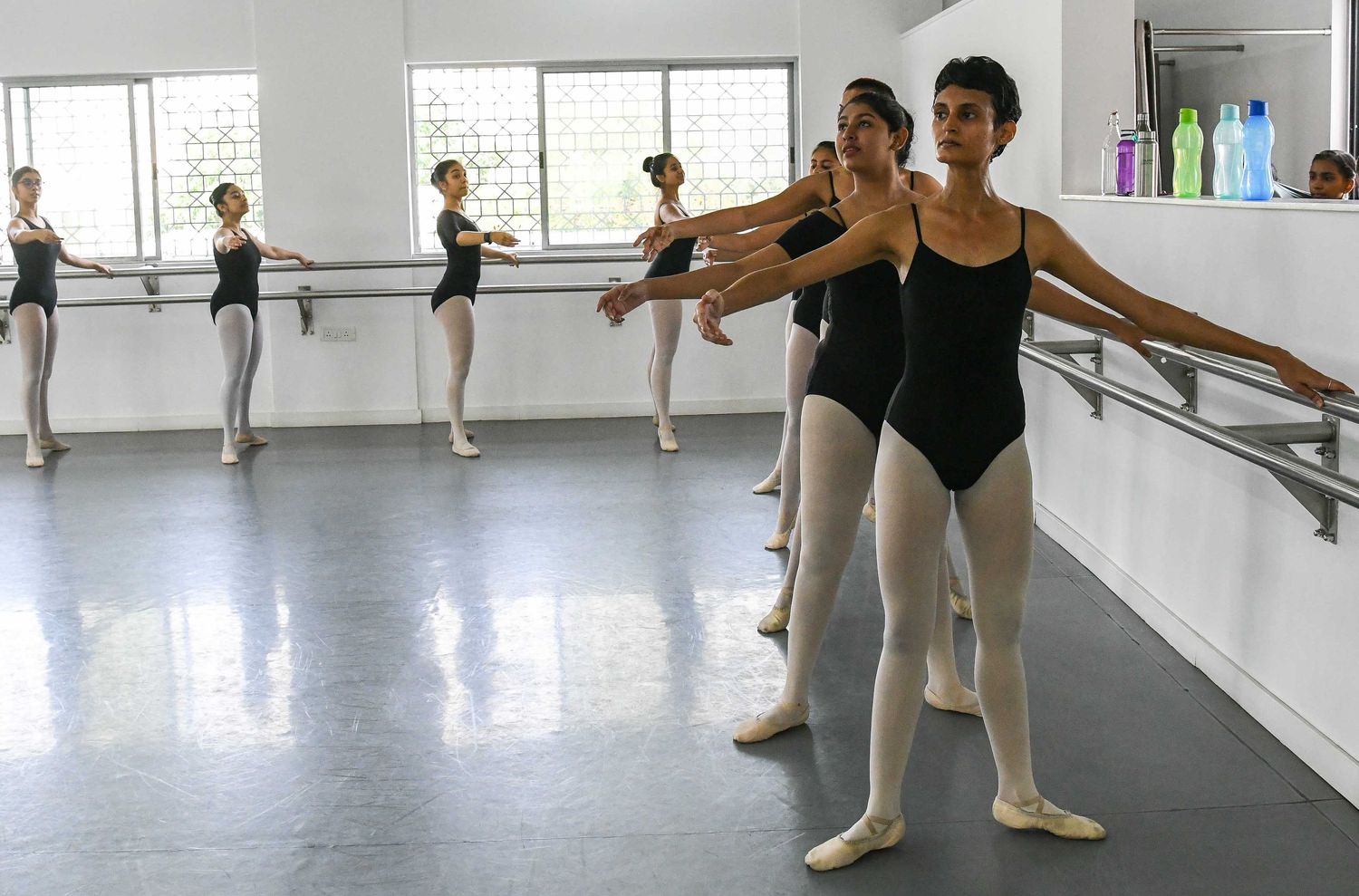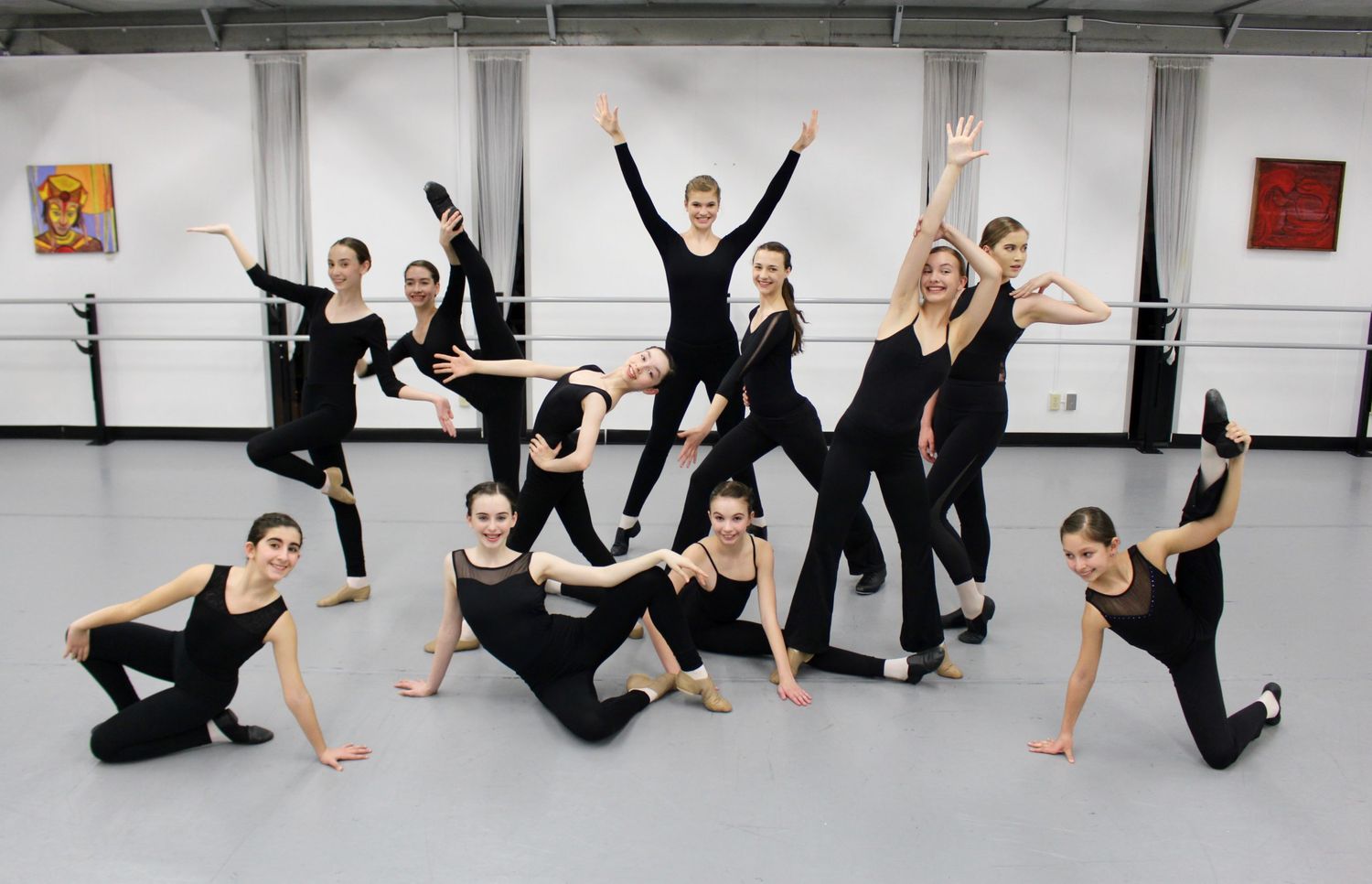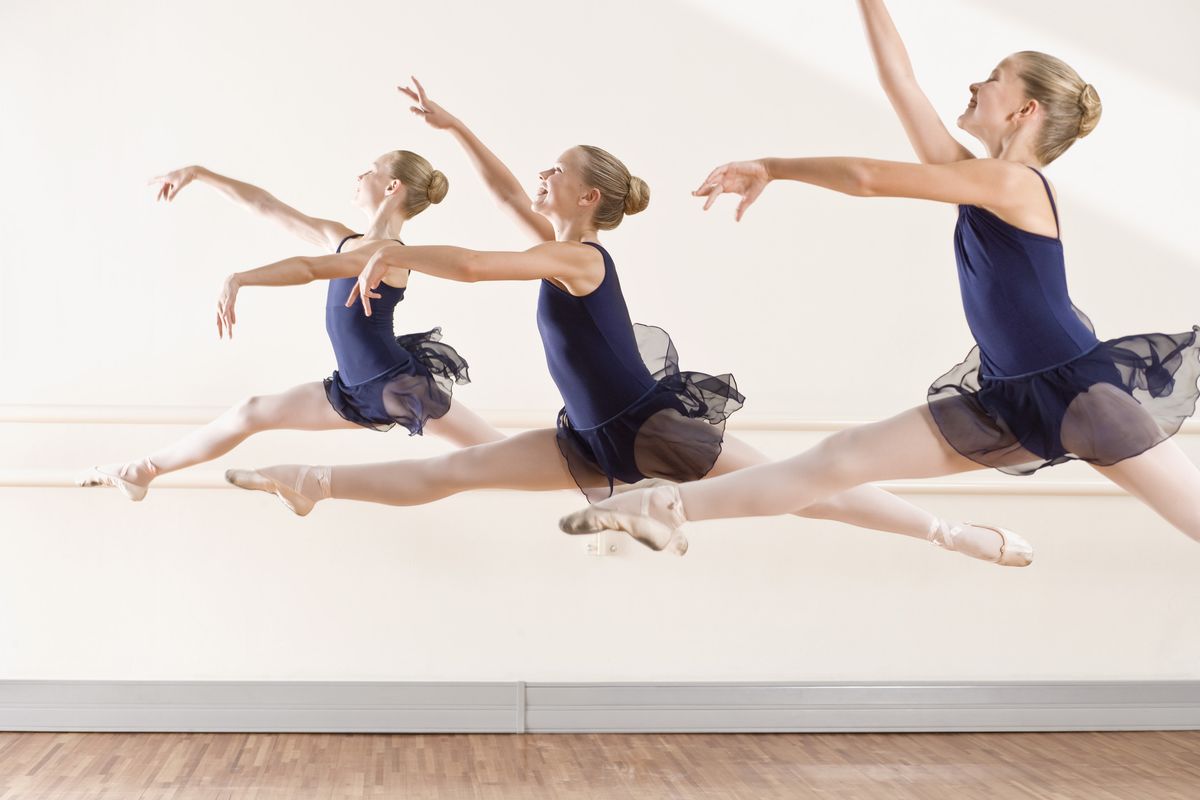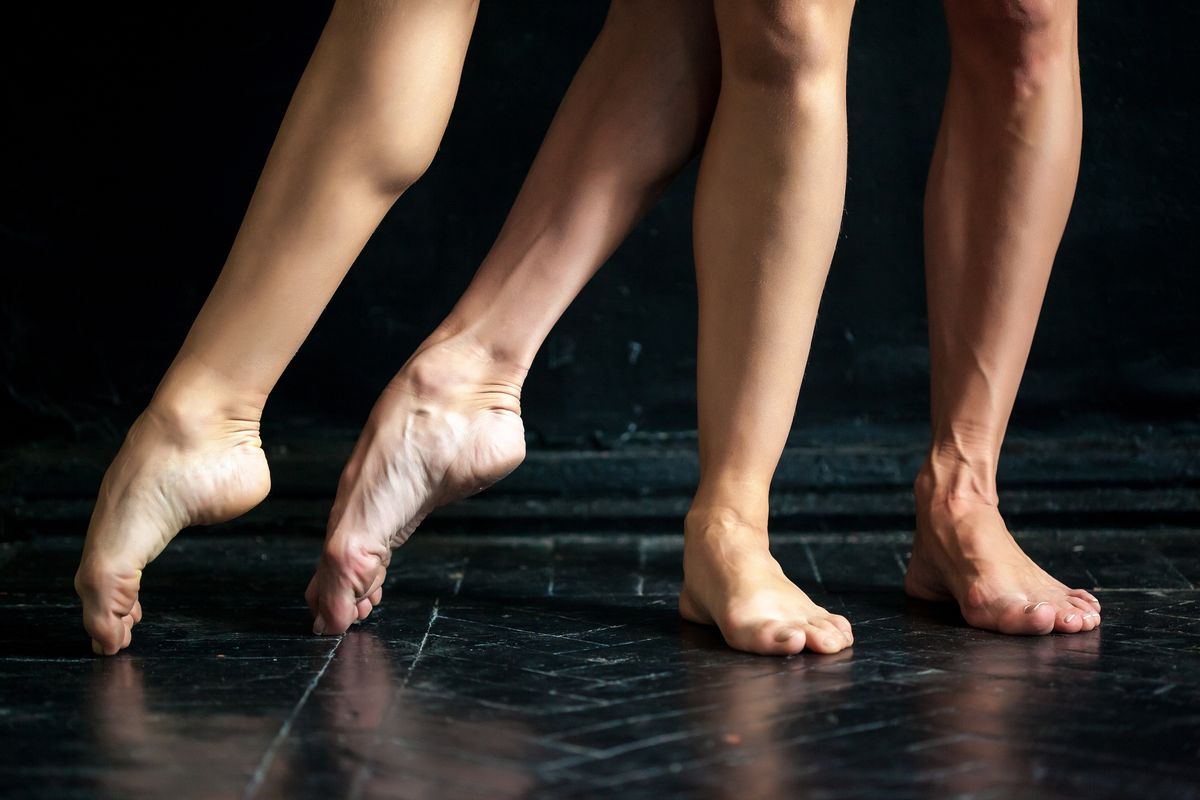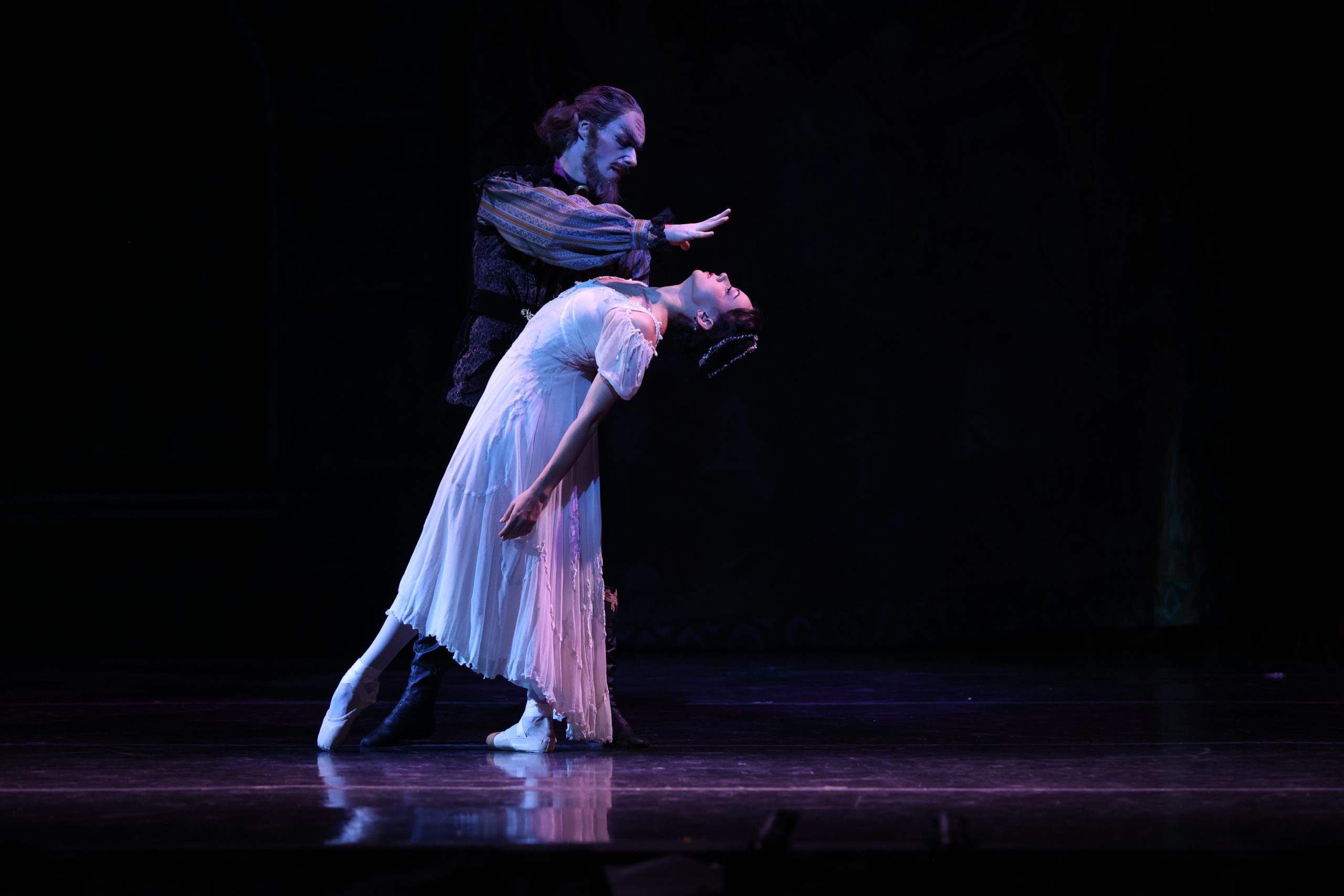Home>Events & Info>Ballet>How To Spin Ballet


Ballet
How To Spin Ballet
Modified: January 22, 2024
Learn the art of ballet and master the skill of spinning with our comprehensive guide. Discover the techniques and exercises to perfect your ballet spins.
(Many of the links in this article redirect to a specific reviewed product. Your purchase of these products through affiliate links helps to generate commission for AudioLover.com, at no extra cost. Learn more)
Table of Contents
Introduction
Ballet is a timeless art form that combines athleticism, grace, and storytelling. It requires precision, technique, and years of dedicated practice to master its intricate movements. One of the most captivating elements of ballet is the ability to spin effortlessly across the stage, leaving the audience in awe.
Spinning in ballet not only adds a sense of elegance to a dancer’s performance but also showcases their control, balance, and artistry. However, mastering ballet spins is a skill that takes time, patience, and commitment.
In this article, we will explore the art of spinning in ballet. We will guide you through the steps of choosing the right ballet shoes, preparing your body for ballet, and mastering the essential techniques needed for successful spins. Whether you are a beginner or an experienced dancer looking to perfect your spins, this article will provide you with valuable insights and tips to enhance your spinning abilities.
So, if you are ready to enter the magical world of ballet spins, let’s get started!
Choosing the Right Ballet Shoes
When it comes to ballet spins, having the right pair of ballet shoes is essential. The right shoes provide the necessary support, flexibility, and grip to execute spins with ease. Here are some factors to consider when choosing ballet shoes for spinning:
- Fit: The most important aspect of ballet shoes is a proper fit. They should feel snug but not overly tight, allowing for natural movement of the foot. Ensure that the shoes are the correct size and width for your feet.
- Material: Ballet shoes are typically made of canvas or leather. Canvas shoes offer more flexibility and breathability, while leather shoes provide durability and structure. Consider the material that best suits your needs as a dancer.
- Split Sole vs. Full Sole: Ballet shoes come in split sole and full sole options. Split sole shoes have a split at the arch, allowing for greater flexibility, arch control, and a seamless line when pointing the foot. Full sole shoes provide more support and stability, making them a suitable choice for beginners.
- Elastics: Some ballet shoes come with attached elastics, while others require you to sew them on. Make sure the elastics are secure and comfortably snug, allowing the shoes to stay in place during spins.
It’s worth noting that every dancer has unique preferences and requirements when it comes to their ballet shoes. Experimenting with different brands and styles can help you find the perfect pair that suits your foot shape and spinning needs.
Remember, ballet shoes are an investment in your dance journey, so take the time to find the right pair that will support you through countless spins and performances.
Preparing Your Body for Ballet
To execute ballet spins with precision and ease, it is crucial to prepare your body through proper warm-up and conditioning. This will help prevent injuries, improve flexibility, and enhance your overall performance. Here are some steps to prepare your body for ballet spins:
- Warm-Up: Start your ballet practice with a thorough warm-up to increase blood flow and loosen up your muscles. Incorporate dynamic stretches, such as leg swings and arm circles, to prepare your body for the physical demands of ballet spins.
- Stretching: Flexibility is vital in ballet spins, as it allows for a greater range of motion. Incorporate a variety of stretching exercises targeting your legs, hips, and back. Focus on stretches that lengthen the muscles and improve your turnout, as this is crucial for executing successful spins.
- Strengthening: Building strength in your core, legs, and ankles is essential for stable and controlled spins. Include exercises like pliés, relevés, and calf raises in your training routine to develop the necessary muscle strength and stability.
- Balance Training: Good balance is key to executing consistent and controlled spins. Incorporate exercises that challenge your balance, such as standing on one leg or practicing relevés in passé position. This will help improve your proprioception and develop a strong sense of stability.
- Posture and Alignment: Maintaining proper posture and alignment is crucial for executing clean and effortless spins. Practice lengthening your spine, engaging your core, and keeping your shoulders relaxed. Pay attention to your body alignment in various ballet positions to ensure efficient spins.
Remember to listen to your body and gradually increase the intensity of your warm-up and conditioning routine over time. Consistency and regular practice are key to preparing your body for ballet spins. By dedicating time to warm-up, stretching, and strength training, you will improve your technique, reduce the risk of injury, and enhance your overall spinning abilities in ballet.
Mastering Ballet Techniques
Ballet spins require a solid foundation in ballet techniques. Mastering these fundamental techniques will not only improve the quality of your spins but also enhance your overall ballet performance. Here are some essential ballet techniques to focus on:
- Correct Body Alignment: Maintaining proper body alignment is crucial for executing clean and controlled spins. Engage your core, lengthen your spine, and keep your shoulders relaxed. Practice standing in first, second, and fifth positions to develop a solid foundation.
- Turnout: Turnout refers to the ability to rotate your legs from the hips, allowing your feet to point outward. It plays a significant role in ballet spins as it creates stability and aesthetic appeal. Work on strengthening your hip rotator muscles and practicing exercises that improve your turnout, such as ballet barre exercises.
- Spotting: Spotting is a technique used in ballet spins to maintain balance and prevent dizziness. Pick a spot in front of you and focus on it as you turn. As your body rotates, your head will be the last to turn and the first to spot the same spot again. This helps with balance and orientation.
- Arm Placement: The position of your arms in ballet spins is crucial for maintaining balance and creating beautiful lines. Practice proper arm positions, such as rounded arms in first position or open arms in second position, to enhance your spins.
- Weight Transfer: Understanding how to transfer your weight smoothly from one foot to the other is important for executing seamless spins. Practice shifting your weight from one leg to the other while maintaining control and balance.
Remember, mastering ballet techniques takes time and consistent practice. Take the time to focus on these foundational techniques, both at the barre and in the center, to build a strong technical base. This will provide a solid platform for executing breathtaking ballet spins as you continue to progress in your ballet journey.
Developing Ballet Spin Techniques
Once you have established a strong foundation in ballet techniques, it’s time to delve into the specifics of developing your ballet spin techniques. Here are some key aspects to focus on:
- Pivot Turns: Pivot turns serve as a foundation for many ballet spins. Practice executing proper pivot turns by starting with a strong plié, maintaining a turned-out stance, and using the support of your standing leg to initiate the turn.
- Working with Momentum: Utilizing momentum can add fluidity and grace to your spins. Start by executing slower, controlled turns, gradually increasing speed as you become more comfortable. Remember to maintain control and balance throughout the entire motion.
- Controlling Your Spot: Spotting is essential for maintaining balance and preventing dizziness during spins. Focus on fixing your gaze on a specific spot as you turn, and only turn your head at the last moment to catch the spot again. This will help you maintain balance and control throughout the spin.
- Using Arms and Upper Body: Your arms and upper body play a crucial role in enhancing the quality of your spins. Practice using your arms to create beautiful lines and maintain balance. Experiment with different arm positions and movements to find what works best for you.
- Gradual Progression: Developing ballet spin techniques requires patience and consistent practice. Start with simple spins, such as single turns, and gradually progress to more challenging variations, like multiple turns or fouetté turns. Focus on mastering each level before moving on to the next.
It’s important to remember that developing ballet spin techniques is a continuous process. It takes time, dedication, and perseverance to refine your skills. Take the time to focus on each aspect, seek guidance from a qualified ballet instructor, and be open to feedback to continuously improve your spin techniques.
By incorporating these tips and techniques into your ballet practice, you will develop a strong foundation and the skills necessary to execute captivating and flawless ballet spins.
Improving Balance and Core Strength
Balance and core strength are essential components of executing successful ballet spins. Improving these aspects of your dance technique will not only enhance the quality of your spins but also improve your overall performance. Here are some ways to improve your balance and core strength specifically for ballet spins:
- Core Exercises: The core is the powerhouse of your body and plays a significant role in maintaining balance and stability. Incorporate exercises like planks, crunches, and Russian twists to strengthen your core muscles. Developing a strong core will help you maintain control and stability during spins.
- Pilates and Yoga: Pilates and yoga practices focus on building strength, flexibility, and body awareness. These disciplines can help improve your balance, posture, and stability. Incorporate Pilates and yoga classes or exercises into your training routine to enhance your overall strength and balance.
- Balance Training: Incorporate specific balance exercises into your training regimen. Practice exercises like relevés in various positions, arabesque balances, and one-legged balances. These exercises will challenge your stability and improve your overall balance.
- Ankle Strengthening: Strong ankles are crucial for spinning in ballet. Incorporate exercises like ankle circles, relevés, and theraband exercises to strengthen your ankles and improve stability. Stronger ankles will help you maintain proper alignment and control during spins.
- Core Engagement: Focus on engaging your core muscles throughout your ballet practice. Imagine a string pulling you upward from your belly button, creating length and engagement in your core. This will help with balance and stability during spins.
Consistency and regular practice are key to improving your balance and core strength. Set aside dedicated time in each ballet practice to work on these aspects, and gradually increase the intensity and difficulty of your exercises over time.
Remember, balance and core strength are not developed overnight. It takes patience, perseverance, and proper technique to see improvements. By incorporating these exercises and techniques into your training, you will enhance your ability to execute beautiful and controlled ballet spins.
Practicing Ballet Spins
Practicing ballet spins is essential to master the art of spinning in ballet. Consistent practice will help you improve your technique, control, and confidence in executing spins. Here are some tips on how to effectively practice ballet spins:
- Start with Basic Turns: Begin by practicing basic turns, such as single pirouettes. Focus on maintaining proper technique, balance, and spotting throughout the turn. Use a ballet barre or a spotter for support and guidance as you perfect your technique.
- Break Down the Specifics: Analyze the different components of a spin and break them down into smaller parts. Focus on body alignment, head spotting, arm placement, and weight transfer. Practice each element separately to improve your muscle memory and understand how they come together in a spin.
- Drill Turns with Different Arm Positions: Experiment with different arm positions and movements while practicing spins. Start with traditional ballet positions and then try variations to create unique visual compositions. This will enhance your artistic expression and add dynamic elements to your spins.
- Use a Spotter: When learning or perfecting a new spin, it can be helpful to have a spotter. A spotter can provide support, ensure proper alignment, and give you feedback on your technique. They can also assist you with balance and help you gain confidence in executing spins without assistance.
- Record and Review: Record yourself practicing spins and review the footage to identify areas for improvement. Pay attention to your body alignment, spotting, and overall control. Take note of any issues and work on correcting them in subsequent practice sessions.
- Practice Both Sides: It’s important to practice spins on both the right and left sides to achieve balance and symmetry. Work on developing equal strength and control in each direction to ensure consistency and versatility in your spinning abilities.
- Practice in Different Dance Styles: Spinning is not limited to just classical ballet; it is a technique used in various dance styles. Experiment with spins in different dance genres, such as contemporary or jazz, to expand your versatility and adaptability as a dancer.
Remember, progress takes time and patience. Don’t get discouraged if you don’t master spins immediately. Stay dedicated to your practice, seek guidance from a ballet teacher, and be open to constructive feedback. With consistent practice and perseverance, your ballet spins will continue to improve and become an impressive element in your dance repertoire.
Common Mistakes to Avoid
When learning and practicing ballet spins, it is important to be aware of common mistakes that can hinder your progress and technique. By addressing these mistakes early on, you can improve the quality and execution of your spins. Here are some common mistakes to avoid:
- Inadequate Spotting: Failing to spot properly can lead to dizziness and loss of balance during spins. Ensure that you maintain a focused gaze on a specific spot and use your head to spot as you turn.
- Unengaged Core: Neglecting to engage your core can result in unstable and wobbly spins. Remember to activate your core muscles throughout the spin to maintain control and stability.
- Poor Body Alignment: Incorrect body alignment can impact the quality of your spins. Make sure to maintain proper posture, lengthen your spine, and keep your shoulders relaxed to achieve clean and balanced spins.
- Incorrect Weight Distribution: Placing too much weight on one foot or neglecting weight transfer can disrupt the flow and stability of your spins. Focus on evenly distributing your weight and transferring it smoothly from one foot to the other.
- Lack of Preparation: Skipping warm-up exercises and not stretching properly can increase the risk of injury and hinder your spinning abilities. Always warm up your body and prepare your muscles before engaging in spins.
- Imprecise Foot Placement: Careless foot placement can lead to instability and reduced control during spins. Ensure that your feet are properly aligned and turned out to achieve cleaner and more stable spins.
- Overusing Momentum: Relying too heavily on momentum without proper technique can result in sloppy and uncontrolled spins. Focus on executing spins with control and precision, rather than relying solely on momentum.
- Overthinking: Overthinking spins can lead to stiffness and lack of fluidity. Trust your training, relax, and let your body naturally execute the technique. Allow yourself to flow with the movement and enjoy the spin.
It’s important to be patient with yourself and address these mistakes gradually. Seek guidance from a qualified ballet instructor who can help identify and correct any specific mistakes you may be making. Remember to practice consistently and with focused intention to overcome these common mistakes and improve your spinning technique.
Tips for Progressing in Ballet Spins
Improving your ballet spins requires dedication, practice, and a commitment to continuous learning. Here are some valuable tips to help you progress in your ballet spin techniques:
- Consistency is Key: Make sure to practice ballet spins regularly to build muscle memory and improve your technique. Dedicate specific practice time to spins and incorporate them into your dance routine consistently.
- Focus on Technique: Pay attention to the finer details of your technique. Work on maintaining proper posture, engaging your core, and executing precise footwork. Continuously refine your technique to achieve cleaner and more controlled spins.
- Take it One Step at a Time: Progress gradually and do not rush the process. Master the fundamentals before attempting more complex spins. Building a strong foundation will serve as a solid platform for further advancement in your spinning skills.
- Seek Guidance: Enlist the help of a qualified ballet instructor who can provide guidance, corrections, and professional insight. Their expertise will help you refine your technique and overcome challenges specific to your spinning abilities.
- Practice Both Sides Equally: It’s essential to practice spins on both the right and left sides to maintain balance and symmetry. Be diligent in developing equal strength, control, and technique on each side of your body.
- Experiment with Different Tempos: Practice spins at varying tempos, from slow and controlled to fast and dynamic. This will allow you to adapt to different choreography and showcase versatility in your spinning abilities.
- Stay Mentally Present: Focus on the present moment and stay mentally engaged while practicing spins. Concentrate on your breathing, technique, and body alignment. Avoid distractions and remain fully present in your practice.
- Stay Positive and Patient: Improvement takes time, so maintain a positive mindset and be patient with yourself. Celebrate your progress, no matter how small, and trust in the process. Remember that every practice session is an opportunity for growth.
- Record and Reflect: Record yourself performing spins to assess your technique and identify areas for improvement. Take the time to review the footage and reflect on your performance. This will help you identify patterns and track your progress over time.
- Embrace Performance Opportunities: Seek opportunities to perform spins in front of an audience, whether it’s in a studio showcase, recital, or competition. Performing under pressure will not only enhance your confidence but also allow you to refine your spins in a realistic performance setting.
Remember that progress in ballet spins is a journey that requires dedication, perseverance, and a passion for the art form. Embrace the process, be patient with yourself, and continue to push boundaries to reach new heights in your spinning abilities.
Conclusion
Ballet spins are a captivating aspect of ballet that showcase a dancer’s skill, control, and artistry. Mastering the art of spinning in ballet requires dedication, practice, and attention to detail. By focusing on proper technique, balance, core strength, and consistent practice, you can develop the skills necessary to execute beautiful and precise ballet spins.
Throughout this article, we have explored various aspects of spinning in ballet, from choosing the right ballet shoes to developing technique and improving balance. We have also provided tips for practicing spins and avoiding common mistakes. Remember that progress takes time and patience, so be kind to yourself during the learning process.
Seek guidance from a qualified ballet instructor who can provide personalized feedback and help you refine your technique. Stay committed to consistent practice and be open to continuous learning and improvement. Experiment with different styles, arm positions, and tempos to add a personal touch to your spins and showcase your artistic expression.
As you progress in your ballet journey, remember to stay focused, stay positive, and trust in your abilities. Embrace the joy and exhilaration that comes with spinning in ballet, and let your passion for dance shine through each and every spin.
So now, go forth, lace up your ballet shoes, and let the magic of ballet spins unfold as you mesmerize audiences with your elegant and graceful movements on the dance floor.



